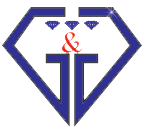Lab Created Quartz

Lab Created Quartz
All gemstones in this category are AAA in quality
Lab-Created Quartz Gemstones (Hydrothermal Quartz Gemstones)
Do you like to collect gemstones, but the higher rate is resisting you? Well, you can try out buying the lab created hydrothermal quartz gemstones. These gems are simulation of Natural Amethyt, Citrine, Peridot and Smoky Quartz gemstones.
So what are these hydrothermal quartz gemstones? How is it different from the natural versions?
Hydrothermal Amethyst Quartz
Amethyst comes in a purple variant of the quartz mineral. They are available in multiple cuts like round, pear, square, heart, emerald, baguette, oval, triangle, trillion and cushion.
It was in the 1890s when the creation of hydrothermal quartz was possible in the laboratory. However, after World War II, only the lab-grown quartz was available for commercial use.
The researchers use the equivalent chemical composition of silicate for Hydrothermal Amethyst Quartz like that of their real Amethyst counterpart. Besides, it undergoes superheated steam to form the synthetic version of Amethyst.
- Chemical Composition: SiO2
- Specific Gravity: 2.65
- Refractive Index: 1.544 to 1.553
- Hardness: 7
- Temperature: 350c to 360c
- Colour: Purple
Usage
The lab-created Amethyst Hydrothermal quartz stones first extensively came into industrial use. After which, they efficiently found their way to jewellery making. Now you can use them to make jewellery like rings, earrings, necklaces, pendants, bracelets and more.
Birthstone
Amethyst Quartz stones are usually an effective birthstone for those who are born in February.
Hydrothermal Ametrine Quartz
Ametrine Quartz gemstones are the formation of silicate chemical composition that is similar to the natural Ametrine. Like other hydrothermal quartz gemstones, Ametrine Quartz is also available in different cuts. From round, pear, square, oval, cushion, baguette, triangle to trillion cuts, Ametrine Quartz gemstones are easy to find.
Again, they also endure higher steam pressure to create.
- Chemical Composition: sio2 (silicate)
- Specific Gravity: 2.65
- Refractive Index: 1.544 to 1.553
- Hardness: 7
- Temperature: 350c to 360c
Usage
The lab-grown Ametrine Quartz gemstones are suitable for use in the jewellery industry.
Birthstone
It is the birthstone for February and November born.
Hydrothermal Citrine Quartz
The lab-created Citrine Quartz gemstones are generously available using the hydrothermal process. The growth temperature varies between 350c to 400c and is then grown by gamma irradiation.
They are available in Cushion, Oval, Pear, Round, Heart, Triangle, Square, Trillion, Baguette and Marquise cuts.
- Chemical Composition: SiO2 (silicate)
- Specific Gravity: 2.63 to 2.65
- Refractive Index: 1.54 to 1.553
- Hardness: 7
- Temperature: 350c to 360c
- Colour: Yellow to intense orange
Birthstone
Lab-created Citrine is the birthstone for people born in November.
Usage
Earrings, rings, bracelets, necklaces, pendants or other jewellery, use them in the different making.
Hydrothermal Peridot Quartz
Unlike other hydrothermal quartz formations, peridot quartz undergoes moderate temperature but with super high pressure. Their formation imitates the natural chemical composition of silicate.
However, Hydrothermal Peridot Quartz is available in various cuts to offer variants to the users. Baguette, round, emerald, heart, oval, triangle, trillion, marquise and cushion are popular cuts.
- Chemical Composition: SiO2 (silicate)
- Specific Gravity: 2.63 to 2.65
- Refractive Index: 1.54 to 1.55
- Hardness: 7
- Colour: Green
Usage
Use them to make rings, earrings, necklaces, pendants, bracelets or any other type of jewellery.
Birthstone
August-born people can wear Peridot Quartz as their birthstone.
Our Supply
We supply premium quality Hydrothermal Quartz gemstones in the same chemical composition as the real ones. Besides, you can get them in a wide variety of sizes and cuts from us.




